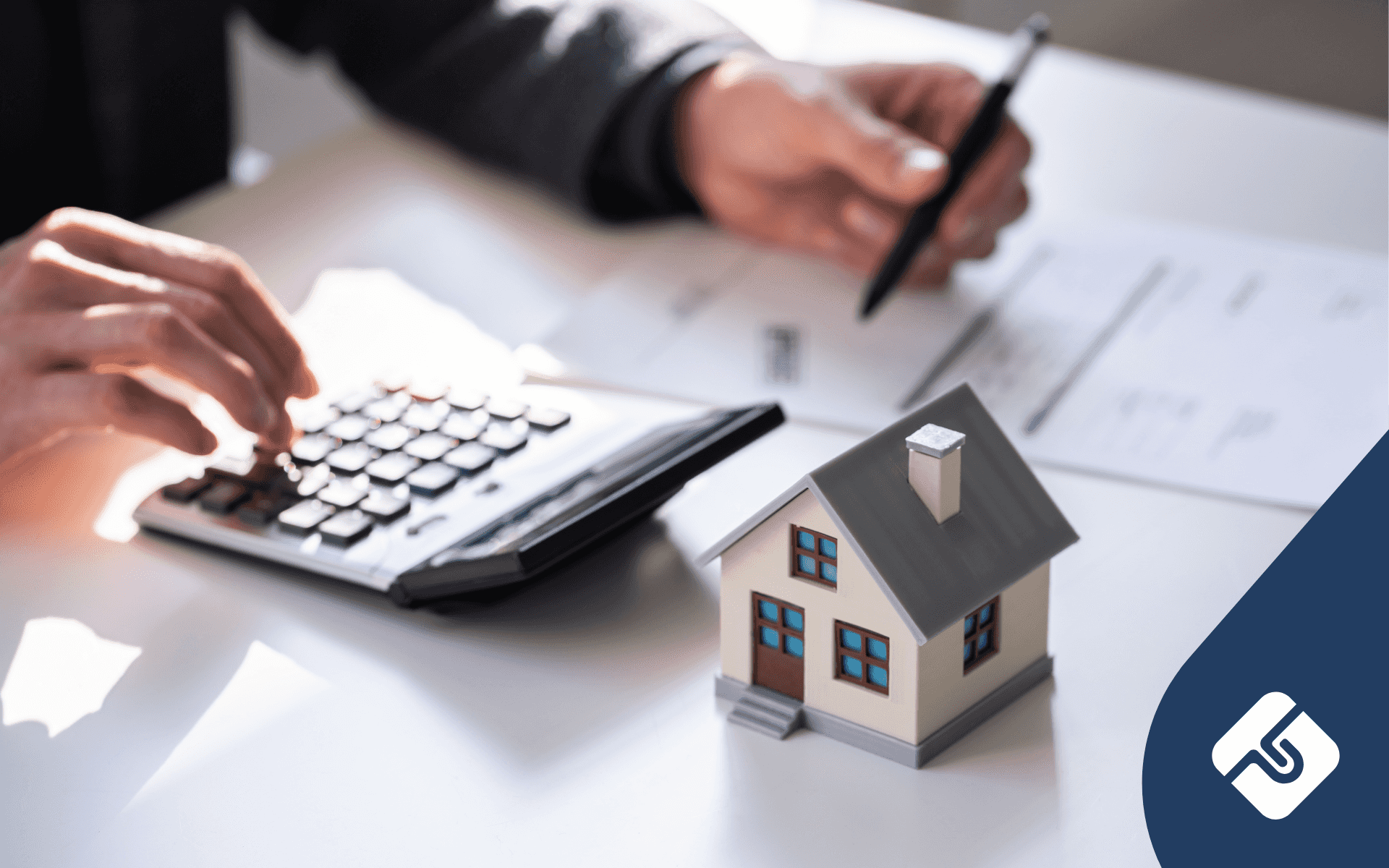Chartered Accountant Timothy Quinn leads Tax & Accounting at Lawpath. 16+ years in tax advisory, specialising in startup growth and expansion. Passionate about supporting entrepreneurial clients with early-stage investment incentives, restructuring, international exit strategy planning, and more.
In Australia, property investment taxes can be complex and daunting to navigate. There are many details to take care of and strategies that you need to understand in order to make the most of your investment and tax benefits.
One strategy that can be perplexing is negative gearing. This comprehensive guide will explain exactly what it is, walk you through the ways to calculate negative gearing, and provide you with the knowledge to make informed decisions about your investment property.
Let’s dive in!
What is negative gearing?
Negative gearing is a financial strategy widely used in Australian property investment taxes. It is used when you spend more on owning and maintaining a rental property than the income it generates. In simpler terms, you’re making a loss on your investment property.
This strategy is popular among Australian investors for several reasons:
- Tax benefits: You can offset the losses from negatively geared properties against other taxable income, potentially reducing overall tax liability. Think of it as a rental property tax deduction.
- Long-term capital growth: As an investor, you may accept short-term losses in anticipation of significant property value appreciation over time.
- Increased investment opportunities: Negative gearing can help you enter the property market with less initial capital.
However, it’s crucial to understand that negative gearing can be a risky investment strategy, as it relies on future capital gains to offset ongoing losses, which isn’t guaranteed. Also, changes in tax laws or interest rates can significantly impact the outcome of this approach.
Get a fixed-price accounting quote
How is negative gearing calculated?
Calculating negative gearing in Australia is relatively straightforward once you understand each component involved. The basic formula is:
Negative Gearing = Rental Income – (Interest + Expenses)
Let’s break this down with a step-by-step guide and a practical example:
- Calculate your annual rental income
- Sum up all your property-related expenses
- Add the interest paid on your investment loan
- Subtract the total expenses (including interest) from your rental income
Negative Gearing Calculation Example
Suppose you have an investment property with the following annual figures:
- Rental Income: $20,000
- Property Expenses: $5,000
- Loan Interest: $18,000
Calculation:
$20,000 – ($5,000 + $18,000) = -$3,000
In this example, the property is negatively geared at $3,000 per year.
You can deduct this $3,000 loss from your other taxable income, potentially reducing your overall tax liability. The exact tax benefit will depend on your marginal tax rate.
What expenses can be claimed under negative gearing?
To calculate how much you might be able to deduct from your taxable income, you need to understand what can be claimed under negative gearing in Australia. Deductions include:
- Loan interest and bank fees
- Property management fees
- Council rates and land tax
- Insurance premiums
- Repairs and maintenance costs
- Depreciation of assets and capital works
- Advertising for tenants
- Travel expenses related to property inspections
- Accounting and legal fees
- Body corporate fees for strata-titled properties
In the meanwhile, there are several things you can’t deduct when it comes to property investment tax benefits. Non-claimable expenses include:
- Personal expenses not related to property investment
- Initial property purchase costs (stamp duty, legal fees for purchase)
- Expenses for private purposes
- Principal repayments on the loan
- Renovations or improvements (these are usually added to the cost base for capital gains tax purposes)
Note that some expenses, like renovations, while not immediately deductible, can be claimed as depreciation over time or added to the cost base of the property for capital gains tax purposes.
Tax benefits and implications of negative gearing
The primary tax benefit of negative gearing is that you can offset losses against your other taxable income. This can potentially reduce your overall tax liability. Here’s how it works:
- You calculate the net loss from your investment property.
- You then deduct this loss from your total taxable income.
- You pay tax on the reduced income figure.
For example, if you earn $100,000 per year and have a negatively geared property loss of $10,000, your taxable income would be reduced to $90,000. The tax savings would depend on your marginal tax rate.
However, it’s crucial to consider the long-term implications.
- Ongoing cash flow: You need to be able to cover the shortfall between rental income and expenses out of your own pocket.
- Capital gains tax: When you sell the property, you may be liable for capital gains tax on any increase in value.
- Changes in tax laws: Government policies regarding negative gearing can change, potentially affecting the strategy’s viability.
Negative gearing vs. Positive gearing
Positive gearing occurs when the rental income from an investment property exceeds the expenses associated with owning it, including loan repayments, maintenance costs, and other fees. This means that you get a net profit but can put you in a higher income tax bracket.
Negative gearing, on the other hand, is when the expenses of owning an investment property surpass the rental income it generates. This means you see short-term losses, but you can often deduct these for your taxable income, reducing your tax liability. Usually, you pursue negative gearing to get long-term gains on the property as it appreciates.
Example:
- Negative gearing: Annual rent $20,000, expenses $25,000 = $5,000 loss
- Positive gearing: Annual rent $25,000, expenses $20,000 = $5,000 profit
Both strategies have their advantages and risks, and the choice between them depends on your financial goals, risk tolerance, and market conditions. For sound financial advice, it’s best to consult with an investment specialist or accountant to assess your unique situation.
Common mistakes to avoid when calculating negative gearing
Negative gearing can bring about significant tax benefits while enabling you to enter the investment property market. However, you need to precisely calculate the tax implications of negative gearing and ensure tax compliance throughout the process.
Here are some common mistakes to avoid when calculating negative gearing.
Overlooking deductible expenses
Failing to claim all eligible expenses can result in underestimating your tax benefits. Many investors miss out on legitimate deductions by forgetting to include all eligible expenses in their calculations.
Example: Sarah forgot to include the cost of her property manager’s fees ($2,000 per year) in her negative gearing calculations. This oversight resulted in her underestimating her tax deduction by $2,000, potentially costing her hundreds of dollars in tax savings.
Solution: Create a comprehensive checklist of all possible deductible expenses related to your investment property. Regularly review this list when preparing your tax return or consult with a tax professional to ensure you’re not missing any eligible deductions.
Claiming non-deductible expenses
Incorrectly claiming personal expenses or capital improvements can lead to ATO penalties. Some investors mistakenly claim expenses that are not tax-deductible, which can trigger audits and penalties from the ATO.
Example: John claimed the cost of a new kitchen renovation ($20,000) as an immediate deduction. However, this is a capital improvement and should be depreciated over time, not claimed as an immediate expense. This error could result in an ATO audit and potential penalties.
Solution: Familiarise yourself with the ATO guidelines on deductible expenses for rental properties. When in doubt, consult with a tax accountant specialising in property investment. For major renovations or improvements, consider getting a quantity surveyor’s report to correctly calculate depreciation.
Ignoring depreciation
Depreciation can significantly impact your negative gearing position and should be calculated accurately. Depreciation on the building and fixtures can be a substantial deduction, but many investors overlook or underestimate it.
Example: Emma purchased a 10-year-old apartment for $500,000. By obtaining a depreciation schedule, she discovered she could claim $8,000 in depreciation deductions in the first year, significantly improving her negative gearing position.
Solution: Invest in a professional depreciation schedule prepared by a qualified quantity surveyor. This report will outline all depreciable items and their values, ensuring you maximise this often-overlooked deduction.
Miscalculating interest
Ensure you’re only claiming interest on the portion of the loan used for investment purposes. If a loan is used for both investment and personal purposes, only the interest on the investment portion is tax-deductible.
Example: Mark borrowed $400,000, using $350,000 for an investment property and $50,000 for a personal car. He can only claim interest on the $350,000 used for the investment property, not the full loan amount.
Solution: Keep clear records of how you use the borrowed funds. If possible, maintain separate loans for investment and personal purposes. If using a single loan for multiple purposes, carefully track the allocation of funds and calculate the deductible interest proportionally.
Forgetting to adjust for private use
If the property is sometimes used privately, you must apportion the expenses accordingly. When you use a property for both rental and personal purposes, you must prorate the expenses based on the time it’s rented out.
Example: Lisa rents out her holiday home for 40 weeks a year and uses it personally for 12 weeks. She can only claim 77% (40/52 weeks) of the property’s expenses for negative gearing purposes.
Solution: Keep a detailed log of when the property is used for rental purposes versus personal use. Use this log to accurately calculate the proportion of expenses that can be claimed. Consider using property management software to help track this information.
Not keeping proper records
Detailed record-keeping is crucial for substantiating claims and avoiding issues during tax audits. Poor record-keeping can lead to missed deductions or difficulties in proving claims during an ATO audit.
Example: Tom claimed $5,000 in repairs and maintenance but couldn’t provide receipts or invoices when audited by the ATO. As a result, his claim was disallowed, increasing his tax liability and potentially incurring penalties.
Solution: Implement a robust record-keeping system. You could use accounting software, maintain a dedicated file for all property-related expenses, and regularly update your records. Keep all receipts, invoices, and bank statements related to your investment property for at least five years.
Get a fixed-price accounting quote
FAQ
What are the rules for negative gearing?
Negative gearing rules in Australia allow property investors to offset rental losses against their taxable income. The property must be genuinely available for rent, and all claimed expenses must be directly related to earning rental income. It’s important to maintain accurate records and only claim eligible expenses.
Is negative gearing only beneficial for high-income earners?
While high-income earners may see more significant immediate tax benefits due to their higher marginal tax rates, negative gearing can benefit investors across various income levels. The strategy’s effectiveness depends on your financial circumstances, investment goals, and the property’s potential for capital growth.
Can I claim all my property expenses under negative gearing?
Not all property expenses are claimable under negative gearing. You can claim expenses directly related to earning rental income, such as interest on investment loans, property management fees, and maintenance costs. However, personal expenses, initial purchase costs, and capital improvements are generally not immediately deductible.
Final thoughts
To accurately calculate negative gearing in Australia, you need to thoroughly understand claimable expenses and keep detailed records. While it can offer significant tax benefits and potential long-term gains, it’s crucial to consider your overall financial situation and investment goals. Remember, property investment strategies should align with your risk tolerance and financial capacity.
For personalised advice tailored to your specific circumstances, consider consulting with a qualified financial advisor or tax professional. They can help you navigate the complexities of negative gearing. Meanwhile, Lawpath can help you manage your accounting while you remain compliant with Australia’s tax laws.

Get on demand legal advice for one low monthly fee.
Sign up to our Legal Advice Plan and access professional legal advice whenever you need it.







